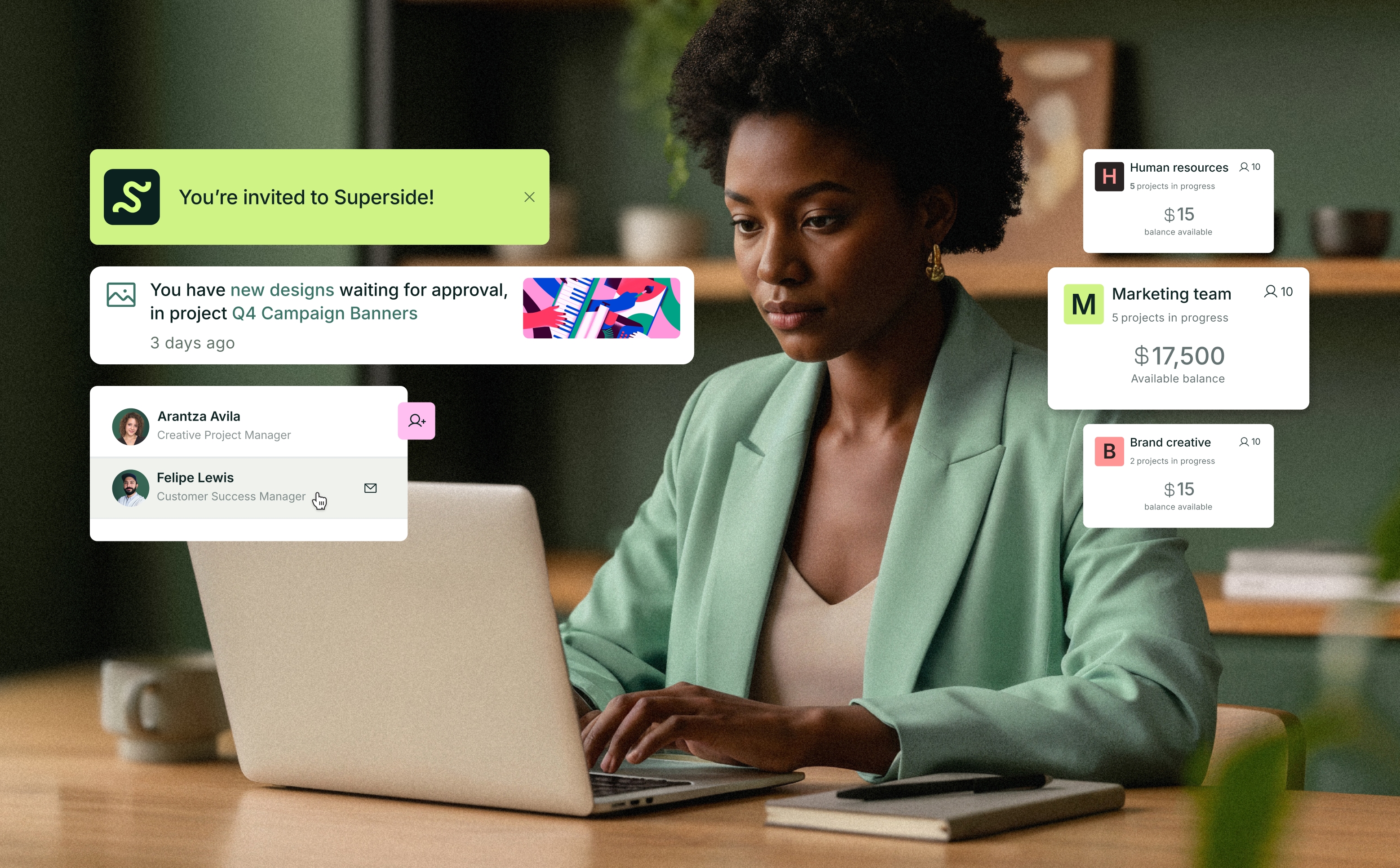
Aside from following Skyscraper-construction, charts and graphs is one of my guilty pleasures. This does not make me an outlier in Superside. Our CEO Fredrik Thomassen is, by a reasonable estimation, even more hooked. One of his main social innovations is a long-running messenger group where people share interesting charts.
I love graphs because they add constraints to data that make it honest and conducive to telling a big picture story in factual terms. While a graph will certainly have a perspective in what it chooses to highlight—the period shown and the axes and filters used—it usually displays these for all to see.
Additionally, using beautifully designed enterprise graphs and reports improves almost any presentation. It adds insight and understanding by putting your message into a surrounding context. It increases credibility, is a comfortable visual break, and is conducive to succinct storytelling.
Seems about right
Graphs are great because they graphically convey factual information quickly. They are high-resolution stories with much stronger constraints than other formats. And while it is possible to lie with statistics, I find that it is both harder to do and easier to spot than with a story or a picture.
Misleading perhaps, but also easy to spot.
Whether for pure curiosity or because I need to build an argument, I often find myself searching for graphs or other visual data to check the validity of something I assume or heard. As anyone who's made a PowerPoint presentation knows, a graph is a must-have visual tool in almost any presentation. Here are seven tricks to finding and creating visual data for your presentations the next time you need some great graphs.
1. Google Image Search
Google image search is usually an excellent place to start looking, but what you find is essentially second-hand graphs—graphs someone else made related to your topic.
The reason I often start here is that usually another researcher has collected, cleaned up and presented the exact data I want to present. Plus, it has the added benefit of quickly introducing me to different views and various angles on the subject that I hadn’t considered.
Nothing shouts research like obsolete second-hand graphs.
2. Wolfram Alpha
Wolfram Alpha is my second stop. It's where I go when I can't easily find graphs elsewhere. Wolfram Alpha is different in that it generates graphs based on the query you send. It trawls through mountains of information from unstructured sources, like books, and aggregates it into something that answers your question.
A downside of using Wolfram Alpha is that you may have a high failure rate. While this is becoming gradually better over time, you should expect to have to make some trials before you get a hit. I often find myself leaving empty-handed.
As usual not quite usable, but a great concept nonetheless.
3. Search in Google Topic + Table / Graph / Data / Infographics
If a Google Image Search and Wolfram don’t get me anywhere, then I start looking at secondary data to build the graph myself. The easiest way to start is, again, a simple Google search.
The most useful results are:
- Scientific research from Google Scholar. These usually show up on top, and have factual, proven information by excellent sources. This is the best way to encounter scholarly data that has not been widely publicized before.
- Primary data from credible sources. Science-related, data-heavy publications, like the Economist, and survey organizations, like Pew or Gallup, hold useful information for graphs.
- Interpretations from credible blogs. Specifically, blogs written by scientists and professors in the subject. They often also include an interpretation of the data that can be illuminating.
A Google search of the topic and keyword.
4. Google Public Data
If even that doesn’t yield results, then that means that the quick-and-easy options are out, and you have to start getting your hands dirty.
The simplest place to start when it comes to selecting the data and filters yourself is Google public data. It has a collection of most of the biggest public data sets available. This includes sources like the World Bank, Eurostat, IMF, WTO, US Census Bureau, OECD, and many more.
What's absolutely terrific about this tool is how quick it is if you have some vague ability to discern who is most likely to have the data you need. With just a few clicks on filters, you get a beautiful chart instantly. And changing the period to the years you need, or changing formats to bar charts or maps, is similarly simple.
Superside's research team is skilled in public data searching and can help find information that will seamlessly fit into any chart or graph.
The world is doing surprisingly well.
If I want to really underline a factual point, this is the place I go. I especially recommend trying the comparison graph. It presents comparison charts, where you can easily select the countries you want to highlight (as shown below). You can then press the play button to see it evolve over time, a trick Google learned from the previous go-to place for such graphs: GapMinder.
I thought India was an IT-hub?
5. SlideShare
For those times where you don’t quite know what you’re looking for, Slideshare is an option that allows you to search for another presentation made about a certain topic. For most topics, someone, somewhere, created a presentation on the topic and uploaded it on SlideShare.
While the quality varies, you can find some true gems. Even if you don’t use it, I always find it useful just to see some graphs, perspectives or interpretations that might be valuable to look at.
6. Reddit / Data is Beautiful
Another step away from search towards discovery is one of my favorite Reddit communities: Data is Beautiful. This is a community of graph nerds who produce and collect interesting data visualizations for each other.
While this resource is seldom useful for actual fact finding, it can be a wonderful place to find things to care about in the first place. Using Reddit’s algorithm for crowd evaluations of a graph, you will find many visualizations here that may not be relevant, but certainly are interesting.
An example of a spurious correlation from r/dataisbeautiful
7. Our World in Data
This project by Max Roser at Oxford University is a great place to find “big picture” graphs that tell a compelling story. The kind of thing you put in the beginning of your presentation to “set the stage” that may or may not connect to the rest of your presentation. Many of the graphs you have seen too many times had their origins here.
Unlike most other places that produce share-worthy, fascinating graphs, Roser is diligent in using credible sources and representing data honestly.
30 million base pairs for the price of a cheeseburger
Once your research is complete, contact Superside and delegate your graphic design needs.












